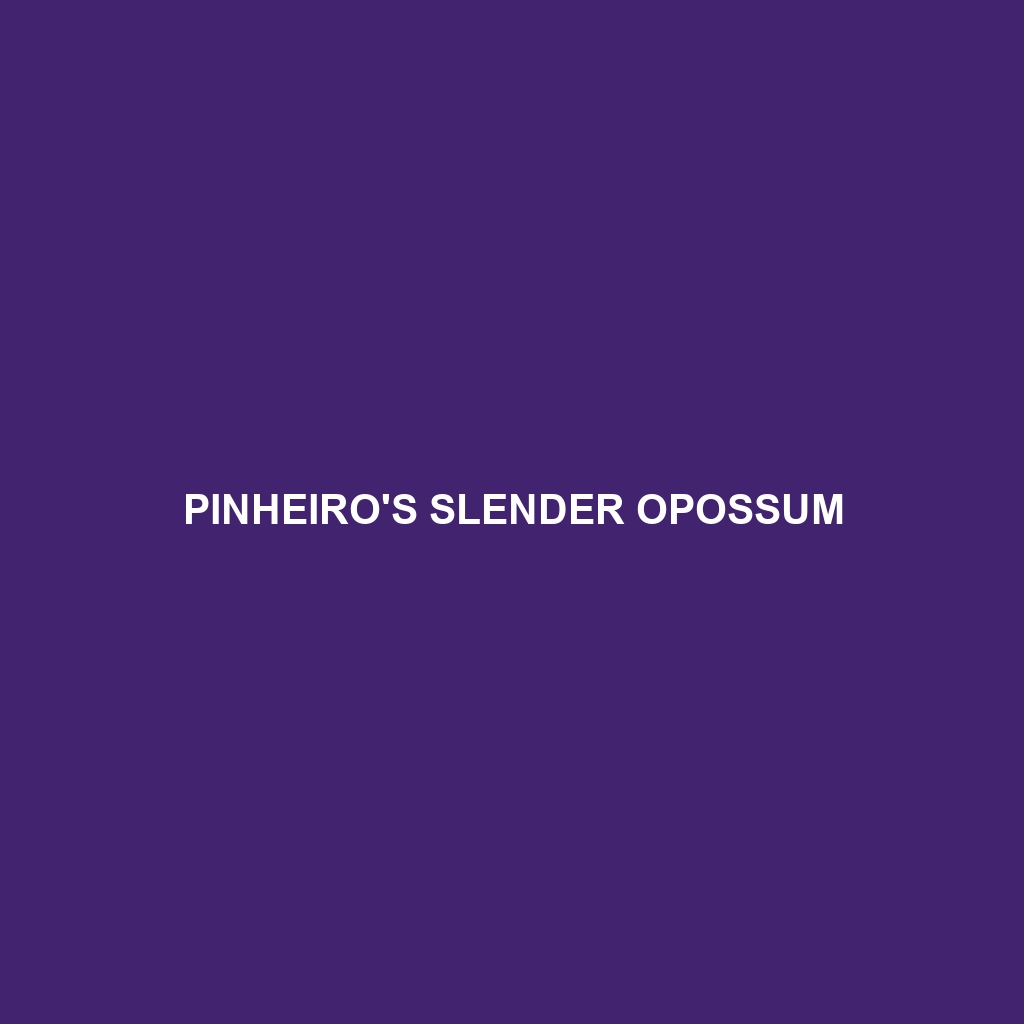Soini’s Slender Opossum (Marmosops soinii)
Soini’s Slender Opossum, scientifically known as Marmosops soinii, is a small, nocturnal marsupial native to the dense tropical rainforests of South America. This elusive and lesser-known species is distinguished by its slender body and agile movements, enabling it to navigate through the dense underbrush with ease. Named in honor of Finnish biologist Pekka Soini, this opossum plays a vital role in its ecosystem, particularly in seed dispersal and insect population control.
Physical Characteristics:
Size: Soini’s Slender Opossum is a diminutive creature, typically measuring between 10 to 15 cm in body length, with an additional tail length ranging from 12 to 18 cm. They usually weigh between 30 to 50 grams.
Coloration: The fur of this opossum is generally a soft grayish-brown on the dorsal side, providing excellent camouflage against the forest floor. The underbelly is lighter, often a pale cream or white. The tail is prehensile and mostly hairless, facilitating gripping and climbing.
Special Features: One of the most distinctive features of Soini’s Slender Opossum is its large, expressive eyes, which are well-adapted for its nocturnal lifestyle. Their whiskers are also highly sensitive, aiding in navigation and foraging in the dark. The opossum’s feet are equipped with sharp claws and opposable thumbs, enhancing its climbing abilities.
Behavior:
Social Interactions: Soini’s Slender Opossum is primarily a solitary animal, except during the breeding season. They are known for their elusive nature, often avoiding interactions with others of their kind.
Feeding Habits: This opossum is omnivorous, with a diet that includes insects, small vertebrates, fruits, and nectar. Their role as seed dispersers is crucial, as they contribute to the regeneration of their forest habitats.
Ecological Roles: As both predator and prey, Soini’s Slender Opossum maintains the ecological balance within its environment. It helps control insect populations and provides food for larger predators, such as birds of prey and snakes.
Habitat:
Natural Habitat: Soini’s Slender Opossum inhabits the dense, humid rainforests of South America, particularly in regions like the Amazon Basin. They prefer areas with abundant vegetation, which offers ample food sources and hiding spots.
Adaptations: This opossum has several adaptations for survival in the rainforest. Its nocturnal lifestyle helps it avoid many predators, while its prehensile tail and agile limbs allow it to navigate through the trees and underbrush efficiently. The coloration of its fur provides camouflage against the forest floor, protecting it from predators.
Conservation Status:
Threats: The primary threat to Soini’s Slender Opossum is habitat destruction due to deforestation and land conversion for agriculture. Climate change also poses a significant risk by altering their habitat and food availability.
Conservation Efforts: Currently, there are limited specific conservation efforts directed at Soini’s Slender Opossum. However, broader rainforest conservation initiatives and protected areas indirectly support their survival. More research and targeted conservation programs are needed to ensure their continued existence.
Fun Facts:
Agile Acrobat: Soini’s Slender Opossum is an exceptional climber, capable of navigating through the forest canopy with remarkable agility, thanks to its prehensile tail and opposable thumbs.
Nocturnal Navigator: Their large eyes are not just for show; they provide excellent night vision, allowing the opossum to forage and avoid predators in the dark.
Secretive Nature: Due to their elusive behavior and nocturnal habits, much about the life and habits of Soini’s Slender Opossum remains a mystery to scientists.
Seed Disperser: By consuming fruits and dispersing seeds through their droppings, these opossums play a crucial role in the regeneration and spread of tropical plant species.
By understanding and appreciating the unique attributes and ecological importance of Soini’s Slender Opossum, we can better advocate for the conservation of this fascinating species and its vital rainforest habitat.
